Tests: Normalized clock frequencies
We revisit our test for normalized clock frequencies. The goal is to run a number of tests with all processors at 2,9 GHz to see how they perform at the same clock frequency. This helps enthusiasts and overclockers to calculate how a specific processor will perform at a certain clock frequency compared to an other processor. The newly arrived processors in the test are obviously todays main show, the Core i7-3770K.
We run all the processors in their standard performance, this means that they are running with the same number of cores that they arrive with and on processors like the Intel Core i7-2600K and Core i3-21000 with HyperThreading switched on. We also run with turbo functions from both camps switched off to make sure that they processors stay at the predetermined clock frequencies.
The clock frequency we chose for a normalized base value was 2,9 GHz, this after the lowest denominator A8-3850 which has a clock frequency at exactly 2,9 GHz. The reason that we’re doing this is that we won’t have to overclock any model, which in turn overclocks other functions in the processor, and therefore might give unfair advantages against the other models.
| Processor | Cores/Threads | Clock frequency |
| Core i7-3960X | 6/12 | 2,9 GHz |
| Core i7-980X | 6/12 | 2,9 GHz |
| Core i7-3770K | 4/8 | 2,9 GHz |
| Core i7-2600K | 4/8 | 2,9 GHz |
| Core i7-2500K | 4/4 | 2,9 GHz |
| Core i3-2100 | 2/4 | 2,9 GHz |
| FX-8150 | 8/8 | 2,9 GHz |
| Phenom II X6 1100T | 6/6 | 2,9 GHz |
| Phenom II X4 980BE | 4/4 | 2,9 GHz |
| Phenom II X2 565BE | 2/2 | 2,9 GHz |
| Athlon II X4 635 | 4/4 | 2,9 GHz |
| Athlon II X3 455 | 3/3 | 2,9 GHz |
We’ve chosen processors with architecture, cache memory and the number of cores in mind. That way we can cover what is relevant today from both AMD and Intel.
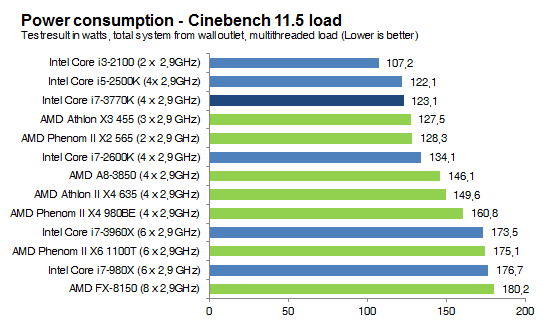
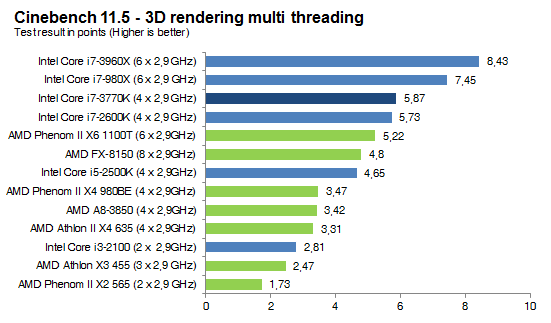
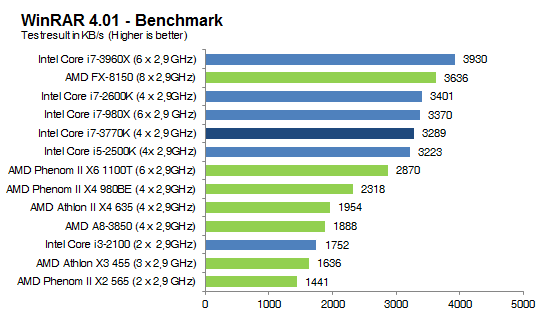
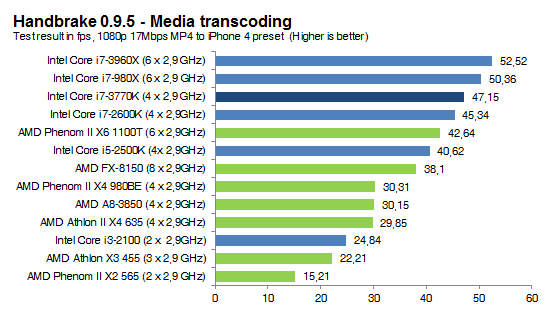
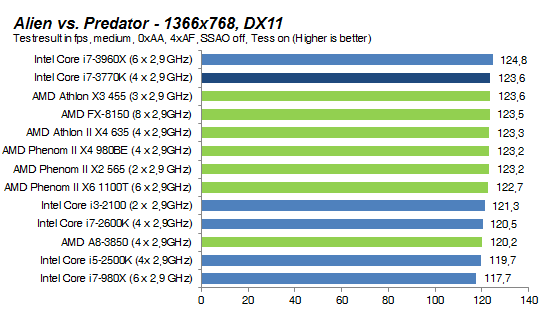
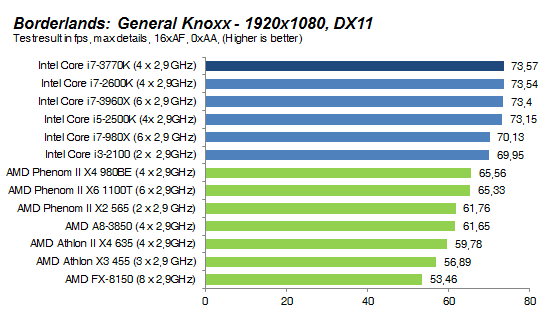
At normalized clock frequencies we still see that Ivy Bridge has an advantage over the previous generation Sandy Bridge, but with much lower margins. This is due to that we’ve turned off Turbo Boost, and at the same time we force all processors to be run at 2,9 GHz. The difference is still very noticeable, but it’s much lower than what we could see in our earlier tests.



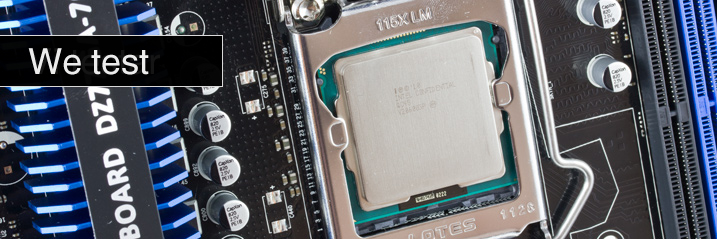
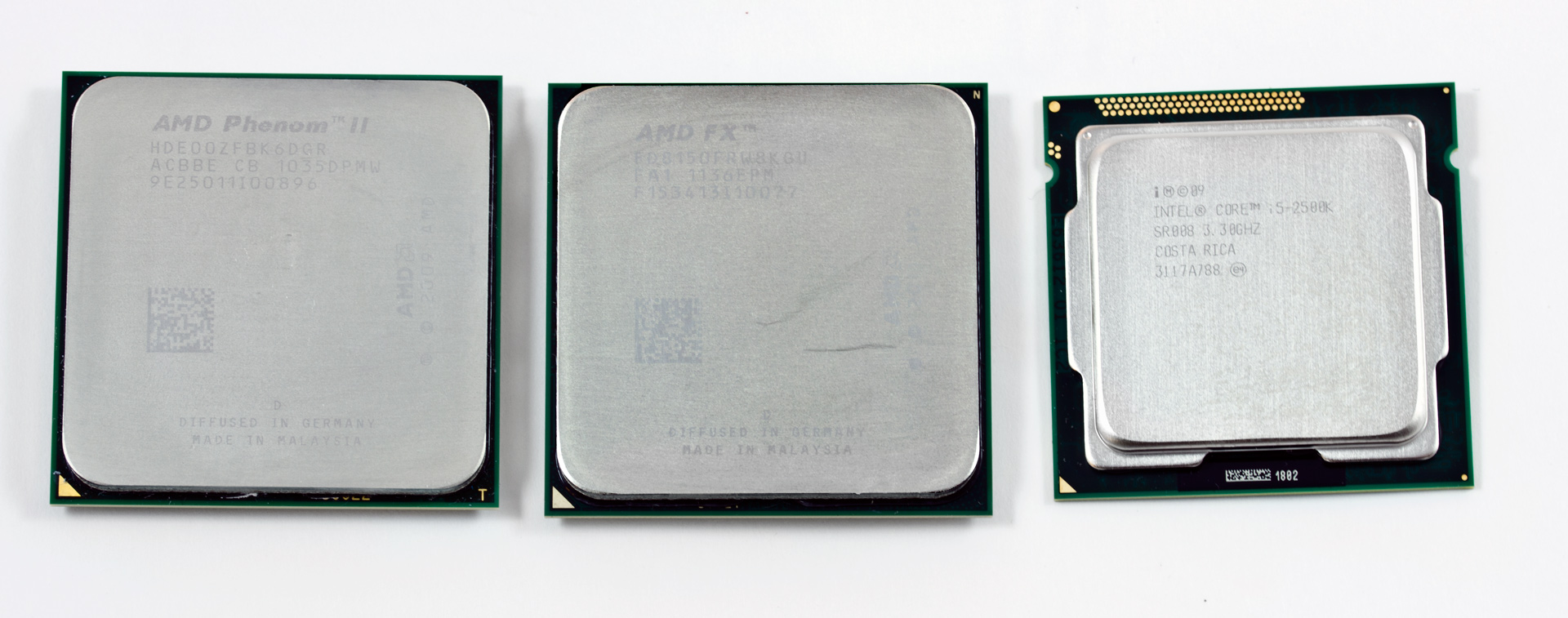




Great review guys, i would really love to see you do much more of them =]
A really great review, good job. Waiting to get my hands on it… but don’t know when it will arrive in Brazil
Glad you liked it 🙂
We hope the new translators will have time for more of these.
You used DDR3-1333 for AMD APU when it’s known that those processors need faster RAM to reach top performance, unlike Intel’s which don’t scale up accordingly. As it is, this is a very Intel-biased review.
[quote name=”Taki R”]You used DDR3-1333 for AMD APU when it’s known that those processors need faster RAM to reach top performance, unlike Intel’s which don’t scale up accordingly. As it is, this is a very Intel-biased review.[/quote]If you’re talking about CPU performance, the difference is very much negligible. I can agree however if we’re talking GPU-performance, where may I add, even Ivy Bridge HD 4000 benefits from higher RAM-clocks as well so it’s pretty much apples-to-apples in that regard. We will be revising our testing methodology during the summer, so we’ll be taking all of these things into close consideration… Läs hela »
It seem Intel will beat AMD more with this line of new generation processor. It is faster and consume less power than sandy bridge and trinity. Core per core / clock per clock basis.
I really like to know though the performance and efficiency compare to AMD trinity.
É realmente incrível todo esse progresso/evolução da INTEL.
BRASIL – CRATO – CEARÁ
É realmente incrível todo esse progresso/evolução da INTEL.
BRASIL – CRATO – CEARÁ
What happens if I put a 125w TDP CPU on a 95w motherboard? If I have a quad-core CPU and disable 2 cores will my CPU fit in the 95w TDP?